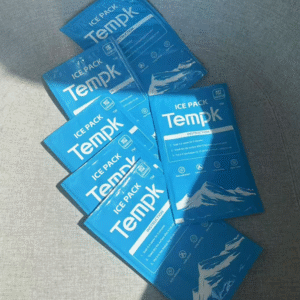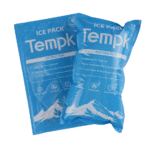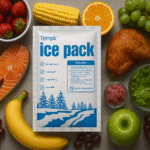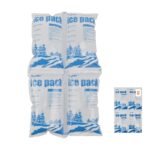Dry Ice Bag Vented: How to Ship Safely in 2025
A dry ice bag vented protects people and products by letting CO₂ escape while keeping the payload cold and compliant. Use a non‑hermetic closure, correct labels (UN1845, Class 9), and a tested insulated shipper to avoid pressure spikes and rejections. This guide blends packing steps, a quick calculator, FAQs, and 2025 trends so you can ship frozen goods with confidence. It consolidates and improves your three drafts into a single best‑in‑class resource.
-
Why must a dry ice bag vented be used? Safer CO₂ release and carrier compliance.
-
Does venting extend hold time? How venting affects sublimation in real shipments.
-
How do you pack and label in 2025? Step‑by‑step with UN1845 and Class 9.
-
What’s new in 2025? Smarter vents, sensors, and sustainability.
Why should every dry ice bag be vented during shipping?
Short answer: A dry ice bag vented prevents CO₂ pressure build‑up and keeps packages compliant. Dry ice turns straight from solid to gas (sublimation). In a sealed bag, gas has nowhere to go, pressure rises, and containers can rupture. Venting uses loose closures or perforations to bleed gas while the insulated outer shipper preserves cold.
More detail: Think of a soda bottle you never crack open—pressure keeps climbing. A vented dry ice bag does the opposite: it lets CO₂ out gently, protecting handlers and preventing carrier rejections. In air transport, pressure variation makes venting even more critical. Use strong LDPE/LLDPE film, leave a non‑airtight path, and ensure the outer box also isn’t hermetic. Pair venting with right‑sized dry ice and insulation for stable temperatures.
dry ice bag vented
What venting options work best for a vented dry ice bag?
Depth view: Common approaches include fold‑and‑clamp, banded/loosely zippered necks, and micro‑perforations in heavy‑duty film. Choose 4–8 mil LDPE/LLDPE for low‑temp flexibility. Avoid heat‑seals that create an airtight closure. Match bag size to ice mass to preserve airflow and let CO₂ escape without spilling pellets.
dry ice bag vented
| Venting method vs. use | How it vents | Typical materials | What it means for you |
|---|---|---|---|
| Fold‑and‑clamp neck | Small gaps at folds | 4–8 mil LDPE/LLDPE | Simple, reliable vent path; fast to train teams |
| Banded/loose zip | Gap under band/zip | Heavy‑duty poly, gusset | Good for pellets; easy to reopen/inspect |
| Micro‑perforations | Punched tiny holes | Tough film liner | Even gas bleed; minimizes pellet loss |
Practical tips and suggestions
-
Air shipments: Use a non‑hermetic inner bag and confirm the outer shipper has a pressure‑relief path.
-
Pellets vs. blocks: Blocks last longer; pellets conform better around product. Bag choice should reflect that.
-
Label discipline: Add UN1845 and Class 9 and net ice weight (kg) on the same panel.
-
Handling safety: Wear insulated gloves; ventilate packing areas.
Real‑world case: A biotech shipper switched to fold‑and‑clamp vented bags and added a 1 cm lid gap in the EPS shipper. Damaged‑package rate fell to near zero while hold time improved by several hours.
dry ice bag vented
Does a vented dry ice bag help the ice last longer?
Short answer: Yes—modestly. A dry ice bag vented lowers direct airflow over the ice, which can slow sublimation compared to ice left fully exposed. The main goal stays safety, with longevity as a bonus.
More detail: Venting creates a controlled micro‑environment: CO₂ exits, but warm air doesn’t rush in as quickly. Lifespan still depends more on insulation, outside temperature, and ice mass. Use bigger blocks for less surface area, minimize empty headspace, and place ice above goods so cold gas sinks over the payload. Expect “a few extra hours,” not dramatic gains.
dry ice bag vented
How should I pack and label in 2025 with a vented heavy‑duty dry ice bag?
Step essentials: Pre‑chill the shipper. Load dry ice into a vented heavy‑duty bag. Keep the bag non‑hermetic. Place ice above or around the product with a protective spacer. Close the cooler without sealing it airtight. Mark DRY ICE / UN1845 / Class 9 and net weight (kg); add addresses and any carrier‑required notes. Train staff on gloves and ventilation.
dry ice bag vented
| Pack step | Why it matters | Check |
|---|---|---|
| Vented inner bag | Prevents pressure spikes | No heat‑sealed neck |
| Quality insulation | Controls heat gain | EPS/EPP/VIP liner |
| Minimal headspace | Slows sublimation | Fill voids |
| Proper labels | Carrier compliance | UN1845 + Class 9 |
Quick “Dry Ice Amount” estimator (interactive concept)
-
Use blocks for long routes; pellets for tight packing.
-
Add a 20–30% buffer in summer or hot lanes.
-
Test once, then standardize the recipe per lane.
2025 updates and trends in dry ice bag vented shipping
Trend overview (2025): Shippers favor built‑in pressure‑relief designs, real‑time sensors for temperature/CO₂, and smarter insulation to use less ice for the same hold time. Expect more reusable shippers, recycled‑CO₂ dry ice sourcing, and clearer on‑box vent cues. These changes boost safety and shrink waste while keeping regulatory compliance front‑and‑center.
dry ice bag vented
Latest at a glance
-
Smart vents: One‑way relief keeps boxes safe without tape tricks.
-
IoT loggers: Alerts if a vent is blocked or temps drift.
-
Right‑sizing tools: Calculators prevent over‑icing and cut cost/emissions.
Market insight: Cold chain growth continues across biopharma, specialty foods, and direct‑to‑patient kits. The winning ops teams pair vented dry ice bags with better lane planning, validated pack‑outs, and fewer touches. Results: fewer incidents, tighter temperature excursions, and improved delivery predictability.
dry ice bag vented
FAQs
Does a dry ice bag vented meet air rules?
Yes—rules forbid airtight packages. Use a non‑hermetic inner bag and label the outer with UN1845, Class 9, and net weight (kg). Train staff to keep vents clear.
dry ice bag vented
Where should I place the ice—above or below the goods?
Above. Cold gas sinks, washing over the payload. Add a spacer so product doesn’t freeze‑burn, and keep the bag vented, not sealed.
dry ice bag vented
Blocks or pellets?
Blocks last longer; pellets pack tightly around odd shapes. Pick based on route length and product fragility.
dry ice bag vented
How do I reduce sublimation on hot lanes?
Use thicker insulation, minimize headspace, and add 20–30% extra ice. Keep the lid’s vent path unobstructed.
dry ice bag vented
Summary and recommendations
Key points: A dry ice bag vented is mandatory for safety and compliance. Pair it with non‑hermetic closures, strong insulation, correct UN1845/Class 9 labels, and trained handling. Expect modest longevity gains; rely on insulation and right‑sized ice for bigger wins.
dry ice bag vented
Next steps: Standardize a vented pack‑out per lane, validate once, and add a small buffer for seasonality. Roll out a training checklist and log mistakes. Monitor excursions and adjust the recipe quarterly. Need help? Schedule a pack‑out review with our team.
About Tempk
Who we are: We design and validate cold chain packaging that meets strict global standards. Our vented heavy‑duty dry ice bags are tested for low‑temperature flexibility and reliable gas release, supporting safer handling and fewer carrier rejections.
Call to action: Ready to optimize your pack‑out? Request a dry ice audit from Tempk, and get a lane‑specific, validated recipe you can roll out this quarter.
























